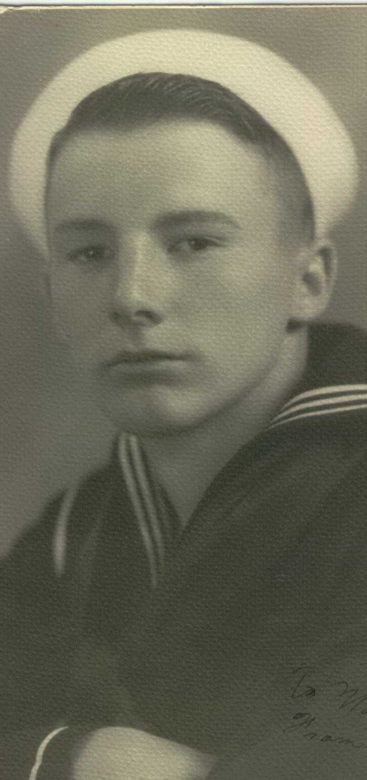It was an impossible task if there ever was one:
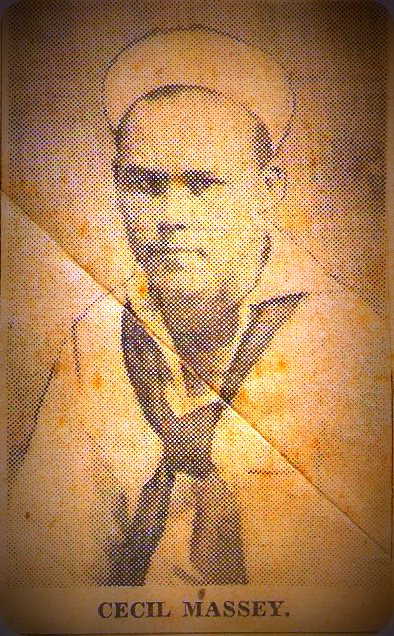
Find the identity of a man who my great-grandfather had a conversation with — some 75 years ago and half way around the world.
Estimates say there were between 2 and 2.5 billion people on the earth then…
But I’ve narrowed down to 4 likely people.
Seem impossible? Here’s how I did it.
Let’s begin with the clues
In his memoir, Alma Salm describes the day he was captured (May 6, 1942) by the Japanese on Corregidor island in The Philippines. He records a conversation from that day, including this bit:
“Oh, take is easy, Buddy,” remarked an optimistic boatswain’s mate. “Our country isn’t going to forget our efforts here. Not by a damn sight….Just wait until I walk in and dazzle my wife with gold braid on my sleeve.
Salm memoir, page 6-7
These few sentences are about the man I’m trying to identify. And there are a few clues here:
- He’s a boatswain’s mate
- He was in the US Navy (Boatswain’s Mate is a Navy role)
- He’s married (Did you catch his reference to “my wife”?)
- He was captured on Corregidor island in The Philippines (He had to be there if Alma Salm talked with him.)
- He was captured by the Japanese on May 6, 1942 (Every American on Corregidor became a POW on that date.)
Start with what you know
Here’s the first rule of family history research: Start with what you know.
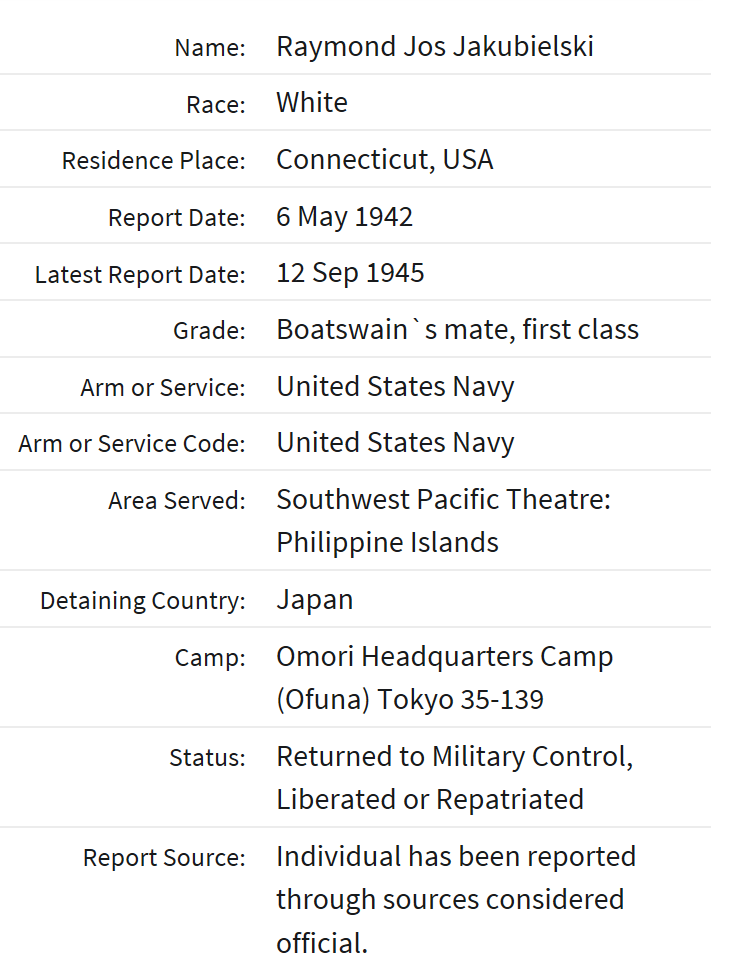
Armed with these 5 clues, I headed over to Ancestry.com. Now, because I’ve been researching POWs for a while, I knew there was a record collection there that lists names and info about POWs in WW2. It’s got more than 143,000 names in it, so I decided to start there.
I told the search to show me people in the collection who fit these criteria:
- Fought in the Pacific theater during WWII (as opposed to the European theater)
- Imprisoned by Japan
- Captured on May 6 or 7, 1942 (some Corregidor POWs are listed as captured on May 7, even though they were captured on May 6. It’s a minor point…)
- Served on Corregidor island in The Philippines
- Served in the US Navy
- Was a Boatswain’s Mate
76 individuals fit this criteria. In other words, 76 POWs on Corregidor island were boatswain’s mates.
From 2 billion to 143,000 to 76. That’s not bad.
But could I narrow it down further?
The “wife” clue is key
Remember the one identifying thing the boatswain’s mate reportedly said about himself?
“My wife”
We’re looking for a married man. Which of the 76 possibilities were married?
That POW record collection doesn’t list marital status. 🙁 But…another WW2 record collection (again on Ancestry.com) includes the name of each naval casualty’s closest relative. (POWs are considered casualties of war.)

So I searched for every one of those 76 boatswain’s mates in the second collection. If the closest living relative was a parent, sibling, or other blood relative, I assumed the sailor wasn’t married.
I ended up with 18 married boatswain’s mates.
Some expert advice and an assumption
Now I needed an outside opinion. An opinion from someone with a much more intimate knowledge of the Navy than me.
I called my dad.
He was a naval officer back in the day. By which I mean, before I was born. And that was in…well a few decades ago, and we can leave it at that. But I digress.
See I had a wondering… Could the fact that Alma Salm referred to this man as “boatswain’s mate” be a clue to the man’s rate? (The term “rate” in the Navy is similar to the term “rank” in the Army.)
Wikipedia told me that there are 6 classifications of boatswain’s mate (from highest to lowest):
- Master Chief Boatswain’s Mate
- Senior Chief Boatswain’s Mate
- Chief Boatswain’s Mate
- Boatswain’s Mate 1st Class
- Boatswain’s Mate 2nd Class
- Boatswain’s Mate 3rd Class
I wondered: If the man was a Chief Boatswain or higher, would Salm have referred to him as “Chief” instead of “a boatswain’s mate”? In other words, could we assume the man was a 1st, 2nd, or 3rd class boatswain’s mate? (I never imagined I’d ever write “boatswain’s mate” as many times as I have writing this post…)
Dad and I chatted for a while and decided that Salm usually used appropriate titles for higher-ranked individuals. So, we reasoned, if the boatswain’s mate was a chief or higher, Salm would have referred to him as “Chief” or “Master Chief,” instead of “boatswain’s mate.”
The 7 married boatswain’s mates
I took another look at my list and eliminated anyone who was a “Chief.” That left me with 7 candidates:
| Name | US Residence | Navy Rate | Status | Prison Camp |
| Wallace Arthur Barton | Montana | Boatswain’s Mate 2nd Class | Liberated | Nagoya |
| Raymond Joseph Jakubielski | Connecticut | Boatswain’s Mate 1st Class | Liberated | Tokyo |
| Joseph J. Adams | California | Boatswain’s Mate 2nd Class | Liberated | Tokyo |
| Charles Lusignan | Rhode Island | Boatswain’s Mate 2nd Class | Liberated | Osaka |
| Clifford H. Christian | Washington | Boatswain’s Mate 2nd Class | Liberated | Tokyo |
| Charles Berry Hatcher | California | Boatswain’s Mate 2nd Class | Liberated | Manila |
| Cecil Frederick Massey | Florida | Boatswain’s Mate 1st Class | Died | Osaka |
Note: Many of the POWs captured in The Philippines were later sent to prison camps in Japan, Taiwan, and elsewhere. Several of the men listed above were sent to such camps.
Seven potential men — out of more than 2 billion people on the planet — that my great-grandfather could have had a conversation with on May 6, 1942.
But I wasn’t done. I asked myself: “Could Salm have known any of these men?”
Who could Salm have known?
Salm included in his memoir the names, it seems, of just about every one he knew. So if he knew the boatswain’s mate, he would have most likely included his name.
I needed to eliminate individuals who served on the USS Canopus with him. He was the paymaster — ie, he handed out their paychecks — so he knew the names of people serving on that ship. I also removed anyone who was incarcerated in the same camps as him (Manila and Cabanatuan, both in The Philippines).
Charles Berry Hatcher. Right off, I crossed off Charles Berry Hatcher, since he was liberated from a Manila prison camp. It might be too much of an assumption, but Salm could have known Hatcher.
Uncovering the details of their lives
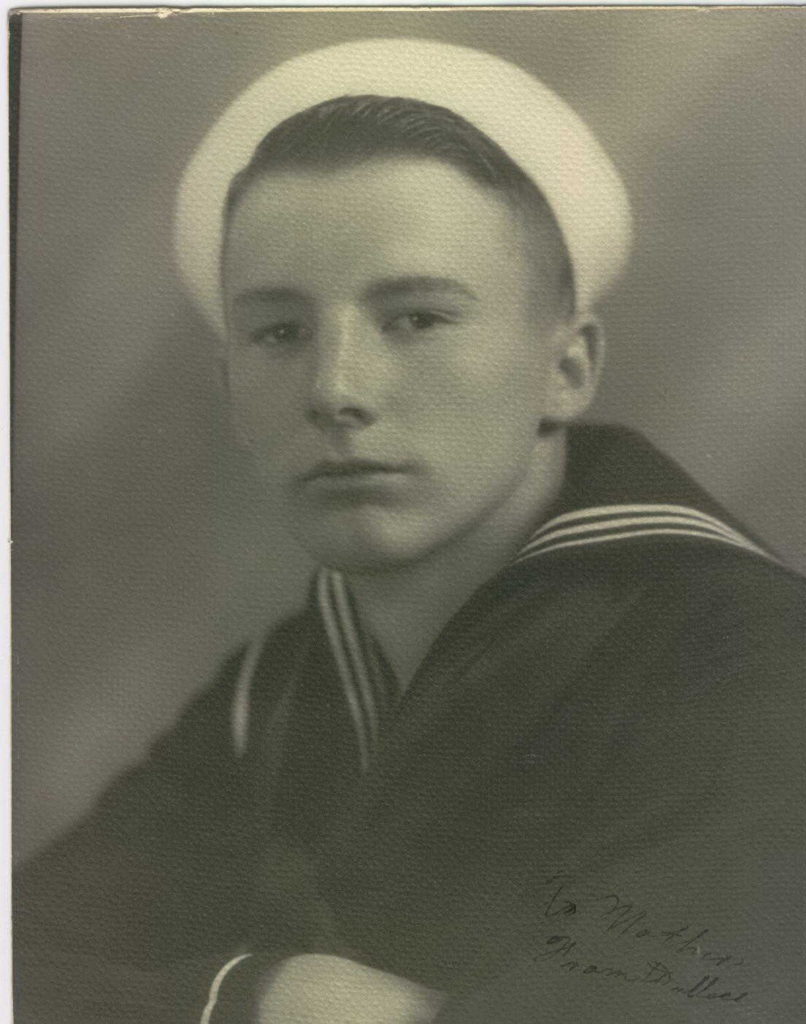
I dug into the lives of the remaining 6 men — starting with Wallace Arthur Barton. (I was still searching on Ancestry.com, just as a FYI.)
Wallace Arthur Barton: At first I was SO excited because up popped a picture of young Wallace. Great! Then I discovered that he served on the Canopus, so Salm would have known his name. And then I realized that the woman listed as his “wife” was really his mother. He wasn’t married in 1942.
2 strikes. Wallace wasn’t a match.
Cecil Frederick Massey is likely not the right man either. From what I’ve found, he was married to a woman in Hawaii in the 1930s, and they had a son in 1939. However, that wife remarried in May 1942 — the same month that Cecil was captured by the Japanese.
So I’m guessing (hoping…) they weren’t married at that time. Thus, Cecil wouldn’t be talking about dazzling his wife with gold braid.
(PS–his pic is the one at the top of this post.)
The final 4 sailors
If you’re keeping count, we’re down to 4. Four potential men who could have had a conversation with my great-grandfather:
- Raymond Joseph Jakeubielski
- Charles Lusignan
- Joseph J. Adams
- Clifford H. Christian
I haven’t been able to narrow down farther and don’t know that I ever will be. Unless, perhaps, one of these men wrote a memoir and mentions having this conversation with my great-grandfather. (Wouldn’t that be something!)
But, for now, I’ll call this needle-in-a-haystack search successful. And find some joy in the fact that all 4 of these potentials made it home.
Try this in your family tree
Here’s my main take away from this activity: No clue is too small.
Without the mention of “my wife,” I wouldn’t have been able to narrow down the list to 4 people. True, I could have narrowed the list of 76 boatswain’s mates down to just those with 1st, 2nd, and 3rd class rates. But that list would have had around 40 people on it. And I wouldn’t have had a good way to narrow it down further.
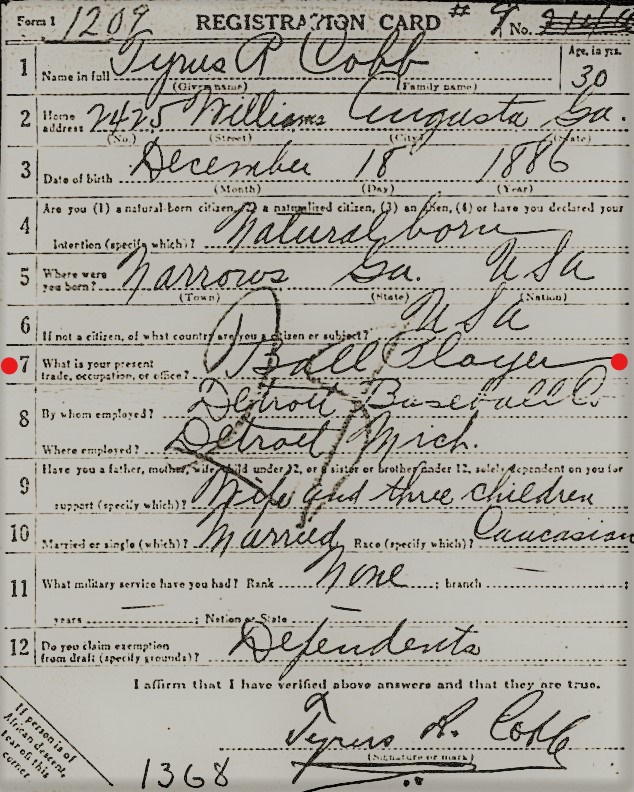
So when you’re searching for someone in your family tree, don’t discount any clue.
Let’s say your great-grandfather was named John Smith. And there were several John Smiths living in the same city and about the same age as him. How do you narrow down to your John Smith?
What other clues do you know? Maybe you remember that he was a postman.
OK! Now look for historical records that list occupations. Several do: census records, draft registration cards, city directories, and more. (See image 5 for an example.)
If you find 4 John Smiths in the town — a banker, a postman, a mechanic, and a farmer — well, you’ve just narrowed down to your guy. Congrats!
And hopefully that record will give you new clues about his life. Then you can use those clues to find more cool docs about him.
Have you tried a similar search in your family tree? Write a comment below and let us know!
Read next
- Check out Salm’s full conversation with the boatswain’s mate.
- View 18 rare historical and modern photos of the Japanese invading Corregidor and the American POWs
Could this post help anyone you know?
If you know someone who is trying to build their family tree, please consider sharing this post with them via email, text, or even on social media!
Sources
- Ancestry.com. World War II Prisoners of War, 1941-1946 [database on-line]. Provo, UT, USA: Ancestry.com Operations, Inc., 2005.Original data: National Archives and Records Administration. World War II Prisoners of War Data File [Archival Database]; Records of World War II Prisoners of War, 1942-1947; Records of the Office of the Provost Marshal General, Record Group 389; National Archives at College Park, College Park, MD. Online at https://www.ancestry.com/search/collections/wwiipow/, accessed 1 July 2019.
- Ancestry.com. World War II Navy, Marine Corps, and Coast Guard Casualties, 1941-1945 [database on-line]. Provo, UT, USA: Ancestry.com Operations Inc, 2007.Original data: State Summary of War Casualties from World War II for Navy, Marine Corps, and Coast Guard Personnel [Archival Research Catalog]; Records of the Bureau of Naval Personnel, Record Group 24; National Archives at College Park, College Park, MD. Online at https://www.ancestry.com/search/collections/wwiicasualties/, accessed 1 July 2019.
Images
- Image 1: Cecil Frederick Massey. Image uploaded to an Ancestry.com family tree by llbridges72 on 23 Jan 2013, found online at https://www.ancestry.com/mediaui-viewer/tree/162217409/person/192114714972/media/f884bf56-5426-4991-904b-c0a681e82156?usePUBJs=true, accessed 2 July 2019.
- Image 2: Screen shot from indexed entry, Ancestry.com. World War II Prisoners of War, 1941-1946 [database on-line]. Provo, UT, USA: Ancestry.com Operations, Inc., 2005.Original data: National Archives and Records Administration. World War II Prisoners of War Data File [Archival Database]; Records of World War II Prisoners of War, 1942-1947; Records of the Office of the Provost Marshal General, Record Group 389; National Archives at College Park, College Park, MD. Online at https://www.ancestry.com/search/collections/wwiipow/, accessed 1 July 2019.
- Image 3: Image from Ancestry.com. World War II Navy, Marine Corps, and Coast Guard Casualties, 1941-1945 [database on-line]. Provo, UT, USA: Ancestry.com Operations Inc, 2007.Original data: State Summary of War Casualties from World War II for Navy, Marine Corps, and Coast Guard Personnel [Archival Research Catalog]; Records of the Bureau of Naval Personnel, Record Group 24; National Archives at College Park, College Park, MD. Online at https://www.ancestry.com/search/collections/wwiicasualties/, accessed 1 July 2019.
- Image 4: Wallace Arthur Barton. Image uploaded to an Ancestry.com family tree by pattydawn1 on 27 Mar 2010, found online at https://www.ancestry.com/family-tree/person/tree/15916369/person/323621473/facts, accessed 2 July 2019.
- Image 5: Ty Cobb WWI Draft Registration Card. Ancestry.com. U.S., World War I Draft Registration Cards, 1917-1918 [database on-line]. Provo, UT, USA: Ancestry.com Operations Inc, 2005.Original data: United States, Selective Service System. World War I Selective Service System Draft Registration Cards, 1917-1918. Washington, D.C.: National Archives and Records Administration. M1509, 4,582 rolls. Imaged from Family History Library microfilm.
